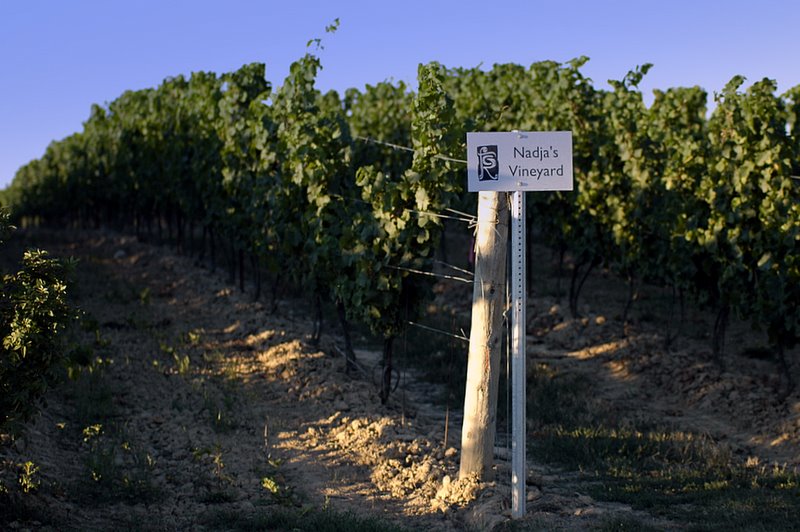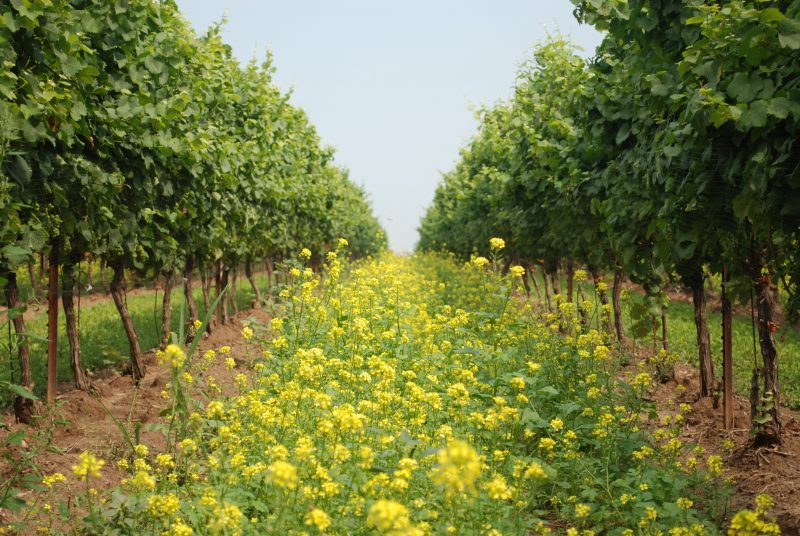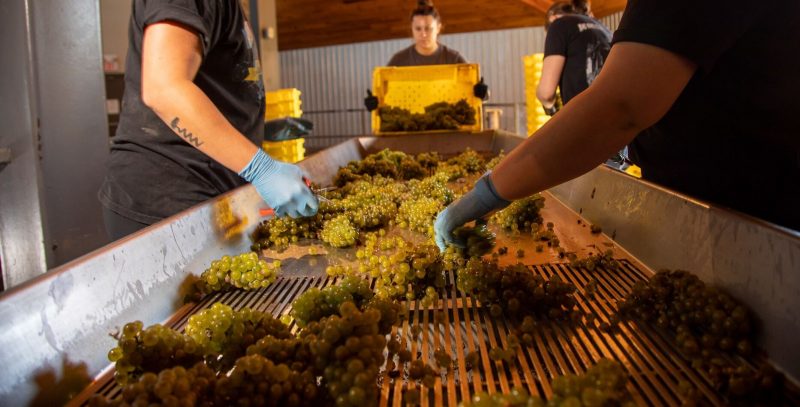Flat Rock Nadja’s Vineyard Turns 20

In her seminal work Vines, Grapes and Wine, author Jancis Robinson, MW, proclaims Riesling to be “…clearly one of the world’s great vines, arguably that which produces the finest white wines of all.”
As she moves through her chapter on Riesling, Robinson identifies the many places this robust, cool climate-loving vine thrives. Germany, of course, but also France, New Zealand, Australia, South Africa, Italy, Austria, Switzerland, Hungary, Romania, Moldova, Czech Republic, Croatia, California, Oregon, Washington, Chile…the list seems almost endless. Canada, however, is not on the list. Perhaps a bit of an oversight considering Riesling thrives in British Columbia, Ontario, and even Nova Scotia. In fact, the first Riesling vines planted in Canada came from the Mosel valley some 50 years ago, and took root in the vineyards of Vineland Estate in Ontario’s Niagara region.
Since then, Niagara has gained international attention for its lusciously sweet Riesling-based icewines. Now, thanks to the accolades bestowed upon Flat Rock Cellars’ 2019 Nadja’s Vineyard Riesling by Decanter magazine, the world is waking up to the true potential of the region’s dry versions as well. In fact, the aforementioned wine attained “Best In Show” status at the 2022 Decanter World Wine Awards.

Recently I had the good fortune to taste 20 years of Nadja’s Vineyard Riesling with Flat Rock Cellars owner Ed Madronach, and current winemaker Hayley Thompson. This proved to be an incredible tasting on a few levels. First, it was a somewhat risky proposition on the part of Flat Rock Cellars, as this was not a “best of” 20 years of Nadja’s – it was every vintage of Nadja’s going back to 2003. And none of the wines presented to a select gaggle of media types were pre-tasted beforehand by the Flat Rock Cellars crew. Second, it allowed us to see the impact of various weather conditions on a single wine from a single vineyard plot across two decades. Third, as a total of seven winemakers were involved in crafting these wines over the years, it provided a unique opportunity to observe the impact of different winemaking styles.
Planted in 2001 on a small plot (not quite a hectare) situated about 30 meters above the rest of the Flat Rock Cellars property, Nadja’s Vineyard (named in honour of the FLC matriarch) is planted in shallow clay loam over glacial deposits atop dolomitic limestone.
“The…parcel that makes up Nadja’s Vineyard is geologically unique,” Madronich points out. There really isn’t anything else like it. Travel 10 meters in any direction from it and you’ll find the topography, the ‘somewhereness,’ of adjacent vineyards are completely different. It is truly a place of extraordinary possibility and one of the greatest sites in the country to grow world-class Riesling.”
For the sake of brevity (and attention span) I’m not going to review every vintage tasted (you can probably find notes on all of them with a bit of Googling), but, rather, offer my personal highlights.
Originally from New Zealand, winemaker Darryl Brooker clearly has a handle on cool-climate viniculture. Both his 2003 and 2004 expressions were fresh and vibrant in spite of their age, each sporting layers of crisp citrus, stone fruit, honey, flint and mild petrol, with the ’04 carrying a tad more weight, but perhaps a shade less complexity.
The 2009, crafted by Marlize Beyers, offered up baked apple, baking spice, subtle tarragon and and lemon custard aromas; zippy acidity, crisp, clean fruit, and a long, lemon pie finish.
In contrast to Brookers’ “Mosel meets Alsace” style, Jay Johnson’s takes gave a definite nod to Germany’s Rhine region. The string of 2012, 2013, and 2014 all showed weight, depth, intense fruit, and great length, while downplaying (if only slightly) the acidity found in some of the other vintages.
Veteran Niagara winemaker Dave Sheppard’s 2019 admittedly kinda stole the show. A final 45 cases of this stunner were released in Ontario mid-March. If you can find any (doubtful) grab some. I won’t go as far as saying it’s “perfect,” but I’m not going to argue with Decanter’s assessment. If you miss out on this vintage, fear not. In my opinion, the 2020 is every bit as good – and has the potential to be even better – with some patient cellaring to fully allow its nascent complexity to emerge.

Even the final wine, a 2022 joint Sheppard/Thompson effort pulled straight out of the tank hinted at future greatness.
To the credit – and showcasing the talent – of each winemaker, all the wines showed vibrancy, complexity, balance, and further potential. And though each vintage displayed its own nuances, there was that “certain something,” unique to Nadja’s Vineyard, that ran through them all.
“Each winemaker has their own personal taste and style preferences,” Madronach concludes, “but one thing that has never changed is a respect for the place. Regardless of who is at the helm, the purity and uniqueness of Nadja’s Vineyard is always at the forefront.”
After 20 vintages, I think Flat Rock Cellars Nadja’s Vineyard Riesling is just beginning to hit its stride. Here’s to another 20 great years (at least) ahead.
